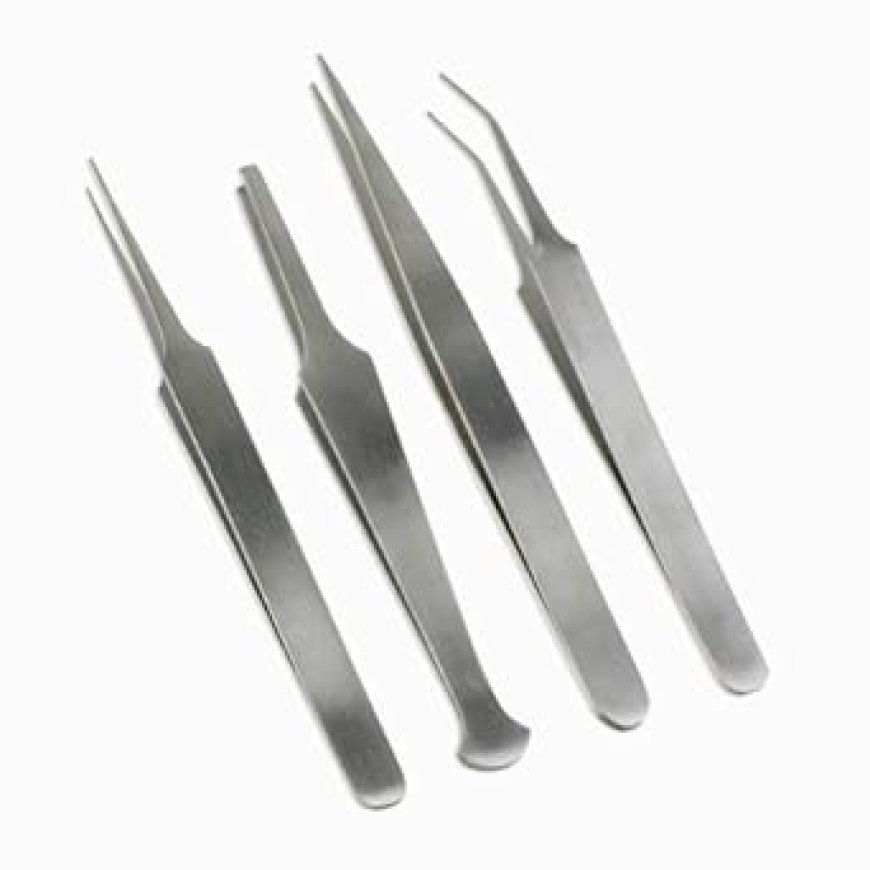Selecting the Perfect Lab Tweezers for Your Needs
Lab tweezers are indispensable tools in scientific research and laboratory work, designed to handle delicate tasks with precision and accuracy.

Lab tweezers are indispensable tools in scientific research and laboratory work, designed to handle delicate tasks with precision and accuracy - furniture laboratorium. Choosing the right tweezers for your specific needs involves considering various factors that impact performance, durability, and usability. This manual is designed to assist you in efficiently maneuvering through the selection procedure.
Types of Lab Tweezers
There are several types of lab tweezers, each tailored for different applications:
1. Fine Point Tweezers: These tweezers have a sharp, pointed tip ideal for handling small and delicate objects such as microcomponents, biological samples, and fine wires.
2. Blunt Tip Tweezers: Featuring a rounded or flat tip, these tweezers are suitable for tasks where a sharper point might damage materials or samples. They are commonly used in general laboratory work and electronics assembly.
3. Curved Tweezers: Curved-tip tweezers are designed for accessing hard-to-reach areas or manipulating objects at awkward angles, providing better control and visibility.
4. Anti-Magnetic Tweezers: Made from materials like stainless steel or titanium, these tweezers are non-magnetic and suitable for handling magnetic components or in environments sensitive to magnetic interference.
5. Dumont Tweezers: Known for their high precision and quality, Dumont tweezers are often used in specialized applications such as watchmaking, electronics, and medical procedures.
Considerations for Choosing Lab Tweezers
When selecting lab tweezers, the following factors should be taken into account:
Material: Tweezers are typically made from stainless steel, titanium, or specialized alloys. Choose a material that suits your specific application needs, considering factors like corrosion resistance and durability.
Tip Design: The shape and size of the tweezers' tips influence their functionality. Determine whether a fine point, blunt tip, or curved tweezers best suit your tasks.
Size: Tweezers come in various sizes, from miniature to standard lengths. Select a size that matches the scale of your work and ensures comfortable handling.
Grip and Comfort: Ergonomic features such as textured grips or anti-slip coatings enhance comfort during prolonged use and provide better control over delicate operations.
Sterilizability: If your work requires sterile conditions, choose tweezers that can withstand sterilization methods like autoclaving or chemical disinfection.
Maintenance and Care
To prolong the lifespan and performance of your lab tweezers:
Cleanliness: Regularly clean tweezers after use to prevent residue buildup, which can affect their precision.
Storage: Store tweezers in a protective case or holder to prevent damage to the tips and ensure they remain sterile when necessary.
Maintenance: Periodically inspect tweezers for signs of wear or deformation in the tips, as this can impact their effectiveness.
Choosing the perfect lab tweezers involves understanding the specific requirements of your tasks and selecting tweezers that offer precision, durability, and ergonomic comfort. By considering factors such as tip design, material, size, and maintenance needs, you can ensure that your tweezers enhance efficiency and accuracy in your laboratory work.
Whether you're handling delicate biological samples, assembling intricate electronics, or performing precision work in various scientific disciplines, the right lab tweezers are essential tools that contribute to successful outcomes and reliable results.

 arisblog
arisblog 










